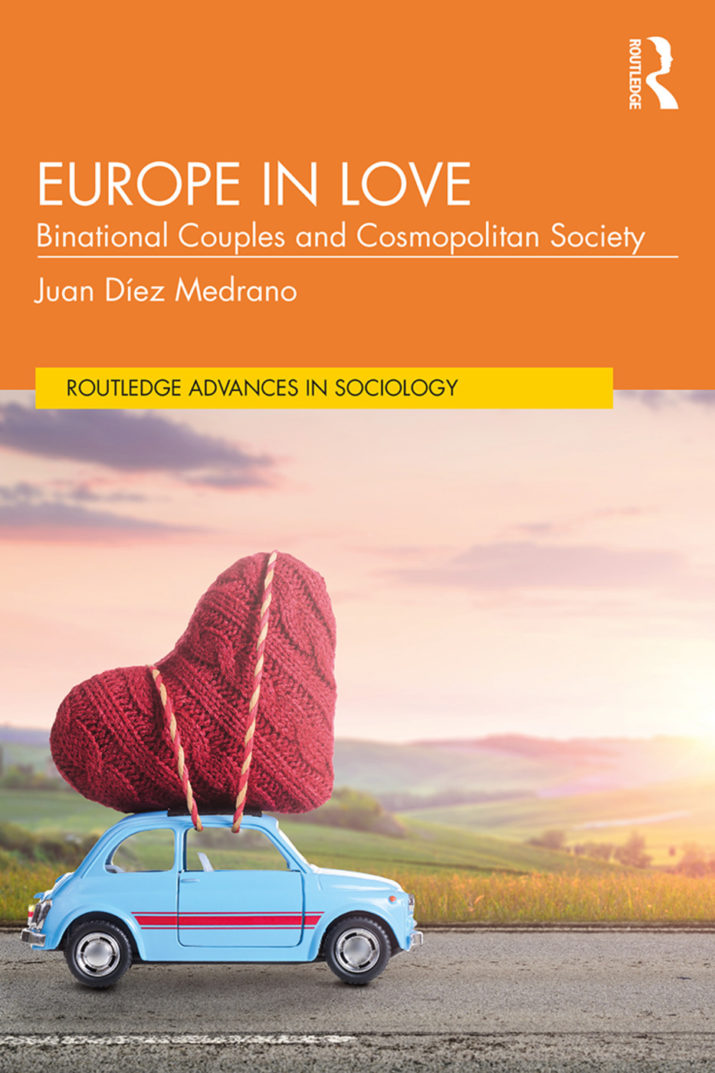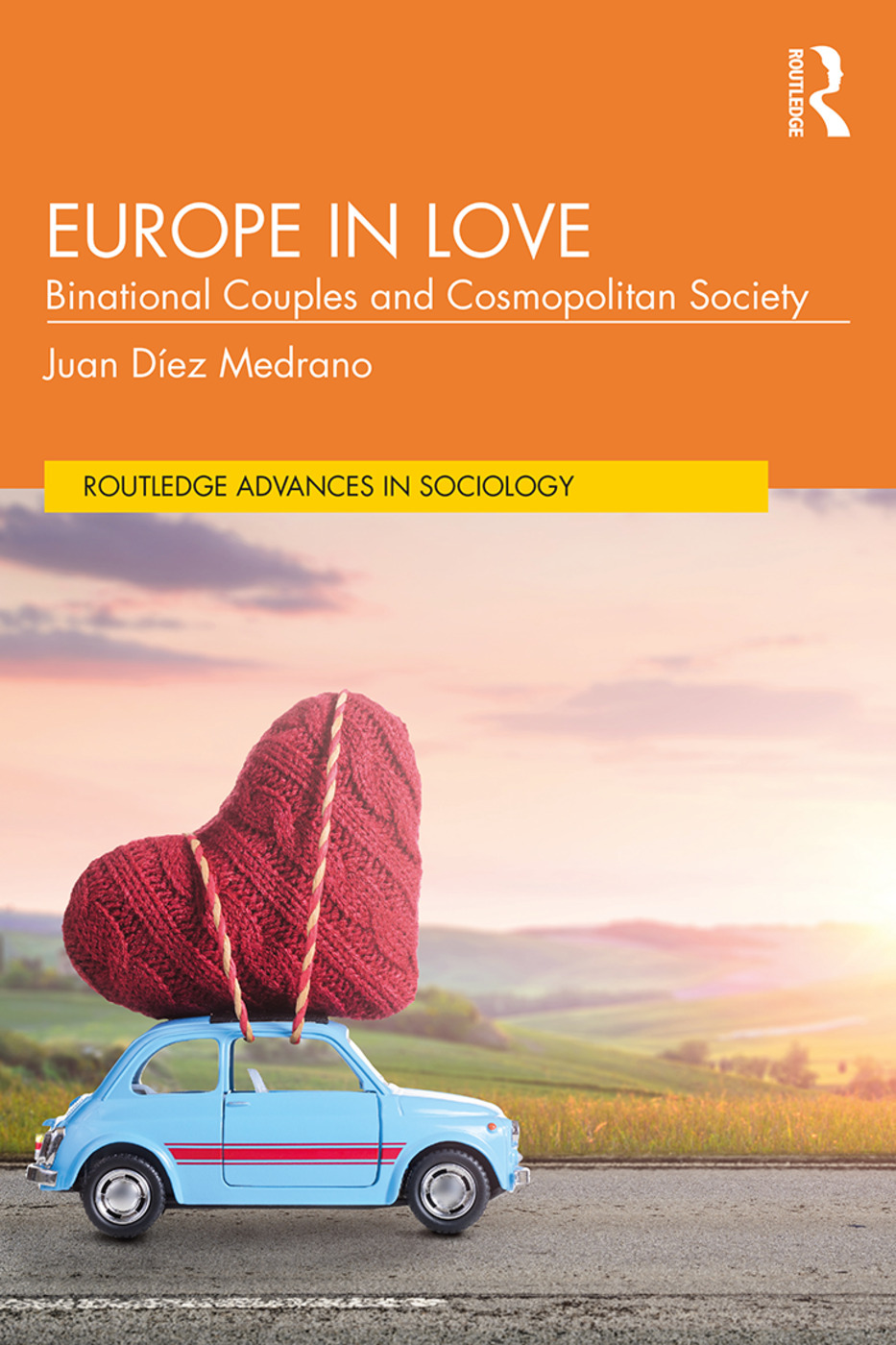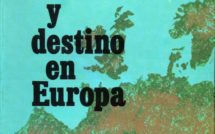

Love and marriage are central to our lives, yet scholars rarely consider how they might matter for politics. Juan Díez Medrano’s pathbreaking book, Europe in Love: Binational Couples and Cosmopolitan Society, offers a provocative and fascinating first step in filling this gap, shedding light on the European Union, the most powerful emerging transnational polity of our time. Binational couples, he states “embody and contribute to cosmopolitan society” in Europe through their lives, tastes, and identities—but his book also shows that romantic partnerships do so in unpredicted and complex ways. In comparing binational to national couples, Europe in Love demonstrates the important work that “the everyday” does, and situates the EU in the longue durée of societies transforming into imagined communities. With an extraordinary treasure trove of new data, Díez Medrano overturns conventional wisdom about the role of class and national identity in the creation of a community of Europeans. More generally, he challenges us to further explore the dynamic evolution of societal relations as political authority shifts away from the nation. This wonderfully written and impressive work should provoke scholars to dig more deeply into the social and cultural underpinnings of European integration going forward.
Cosmopolitanism, for Díez Medrano, is the ability to navigate foreign locations and cultures confidently, and to identify with geopolitical spaces beyond the nation-state. Today, the question of who feels this sense of cosmopolitan identity, and who does not, is critical to the disrupted politics around us. The divisions between those voters who embrace being cosmopolitan, as opposed to those more provincially-oriented in their outlooks, in interaction with the degrading economic opportunities they faced, has been key to the rise of populist parties and our deep political polarization today [1]. The European Union’s striking openness and mobility across national borders, joined by its putative motto of “unity in diversity,” has long made the EU the defining example of what cosmopolitanism looks like in the twenty-first century. The potential for binational love to infuse its couples with a greater degree of cosmopolitan outlook could be a vitally important development for the broader political landscape in Europe, and help determine the success of the EU in creating a robust, shared political community. Díez Medrano offers us reasons to believe that this potential is unfolding in real time, while his book opens the door to further debate and exploration of the dynamics at work.
Most broadly, Europe in Love is a very welcome landmark in a series of recent efforts to take more seriously the role of the everyday in political life. Unlike colleagues in the humanities, social scientists have traditionally focused on the larger structural and organizational forces at work in shaping outcomes. Politics, in this view, is about elites deciding policies, or rationally calculating individuals voting on their narrowly constructed interests, or legal and governmental institutions definitively shaping electoral outcomes. However, a new strand of EU scholarship zeroes in on the daily lived experiences of people and asks how they matter [2]. For those trying to understand the evolution of the European Union as a political project, books like Ettore Recchi and Adrian Favell’s Everyday Europe and Theresa Kuhn’s Experiencing Europe, join early work such as Adrian Favell’s Eurostars and Eurocities in moving forward a more comprehensive understanding [3]. Díez Medrano’s research is unique, however, in being the first systematic and sustained analysis of something so fundamental—who and how we love—and its impact on how we organize our work and social lives, engage with politics, what we eat, read, listen to and watch, and thus ultimately, how we view the world around us and our own identities in it.
The scholarly accomplishment that is Europe in Love also rests in a second major set of insights, those around the place of the EU as an emergent political entity whose transformations and dynamics are both similar to, and contrast with, examples of earlier historic comparative development. Díez Medrano argues that a European society has been formed, and is deepening, in part because of the increasing prevalence of binational couples. He provides a convincing conceptual argument for linking this EU trend to the experience of the rise of the nation state, and the crafting of a powerful imagined community drawing it together through nationalism. Yet, Díez Medrano repeatedly notes that the link between social transformations and political change is not unilinear or pre-determined. He provides multiple examples of bi-national couples creating new social ties to undergird European political integration, but those ties are always refracted through the differential situations and circumstances of the couples involved.
Europe in Love’s most notable contribution centers on its immense trove of data around the construction, or not, of cosmopolitanism through romantic partnerships in Europe. A series of carefully crafted surveys across seven large European cities provides an unprecedented look at the ways in which the experiences of European binational couples differ from their co-national counterparts. The data, generated by a team of researchers under the EUMARR project with funding from the European Social Science Foundation and national research agencies, involved extended surveys of randomly sampled people in Brussels, Antwerp, Amsterdam, The Hague, Barcelona, Madrid, and Zurich. It convincingly demonstrates the creation of a distinct cosmopolitan society among binational EU couples, with Europe as a focal point, even as national identities remain strong. In addition, a series of in-depth interviews with a small number of Spanish participants provides some texture and color to the quantitative data.
The questionnaire city samples included a control group of cohabiting or married national couples, as well as the group of couples with one national and a national of another European Union country (except for Zurich, which targeted all binational couples and offers an effective non-EU case to tease out what is different about the EU). The upwards of eighty tables in the book are mostly simple statistical analyses using bivariate percentage tables, complemented by multiple regression models to help interpret the associations found in the data. This descriptive rather than causal inference approach is entirely appropriate for Díez Medrano’s goal, which is to offer the first overview of the characteristics of EU binational couples and how they differ from national ones, in ways that may shape cosmopolitanism. In turn, this should lead to more targeted investigations by other scholars to tease out the causal stories at work in constructing, or not, attachment to the EU and its polity. The data also leaves open a major question: the relative importance of bi-national couples as a percentage of the European population, something one hopes will be collected by either public or private entities going forward.
One strikingly important finding of Europe in Love is that the experiences of binational couples are not driven by a simple story of economic “winners” and “losers” from the opportunities afforded by European integration and a single market. Díez Medrano rejects the contention by earlier scholars, such as Neil Fligstein in Euroclash, that we should understand the impacts of the EU as falling primarily along socio-economic class lines, where only the middle class and above will find their lives opened up and transformed by the mobility and experiences of Europe [4]. Instead, Europe in Love demonstrates that the social ties generated by the EU’s lack of borders, made most concrete in binational marriage, dominate and play out in surprising ways. While both upper- and lower-class binational couples are cosmopolitan social groups in the making, the book’s surveys show that less educated foreign partners in binational coupes actually find some elements of cosmopolitan life easier. They tend to benefit from more emotional support and help in addressing the challenges of daily life outside of their home country than do their more educated peers, and often experience their moves to a new country as upward social mobility. The book therefore gives us a glimpse of the way social networks develop and function in different socio-economic classes, and highlights that less educated mobile Europeans may enjoy more robust safety nets based on blood relatives and social relationships not predicated only on work. In addition, Díez Medrano uses data on cultural consumption patterns around film, literature, and food, and on political participation, to show how cosmopolitan cleavages between upper- and lower-class binational couples are not as stark as one might expect, even as social segmentation is still occurring.
Finally, Europe in Love provides a critical intervention in the pressing question of how we should conceptualize and understand the development of a European identity. Providing a rich array of indicators of the cosmopolitan identification in cultural consumption and political engagement, the survey data that Díez Medrano reports demonstrates the reality of co-existing political identities in the EU. Rather than seeing Europeanization as denationalization, it points to the ways that national identity and European identity can be complementary—but also shows the relatively tepid emotional attachment that the EU holds for most of its citizens. It is a rebuke to the standard methodological nationalism of much scholarship that leads us astray when we should think in terms of a fluid and overlapping and intersecting set of political identities, not just in terms of the territorially bounded unit of the nation-state.
In all, Europe in Love represents an extraordinary accomplishment from a scholar whose previous works have repeatedly deepened our understanding of the sociology and politics of the EU. As usual with Díez Medrano’s scholarship, in reading this book, we end up wiser about the fascinating and unprecedented path of European integration—and the role of love and marriage in its outcome.
Kathleen R. McNamara is Professor of Government and Foreign Service at Georgetown University. Her work focuses on the evolution of the EU as a political authority, culture, identity, and markets. She is the author of The Politics of Everyday Europe: Constructing Authority in the European Union (Oxford University Press, 2016) and The Currency of Ideas: Monetary Politics in the European Union (Cornell University Press, 1998). At Georgetown, she co-directs, with Professor Abe Newman, the Global Political Economy Project, and tweets from @ProfKMcNamara.
Europe in Love: Binational Couples and Cosmopolitan Society
By Juan Díez Medrano
Publisher: Routledge
Hardcover / 242 pages / 2020
ISBN: 9780367478575
[1] Michèle Lamont, “Addressing Recognition Gaps: Destigmatization and the Reduction of Inequality,” American Sociological Review 83, no. 3 (June 1, 2018): 419–44; Jonathan Hopkin, Anti-System Politics: The Crisis of Market Liberalism in Rich Democracies (Oxford University Press, 2020).
[2] Kathleen R. McNamara, The Politics of Everyday Europe: Constructing Authority in the European Union (New York City: Oxford University Press, 2015).
[3] Ettore Recchi and Adrian Favell, Everyday Europe: Social Transnationalism in an Unsettled Continent (Policy Press, 2019); Theresa Kuhn, Experiencing European Integration: Transnational Lives and European Identity (OUP Oxford, 2015); Adrian Favell, Eurostars and Eurocities: Free Movement and Mobility in an Integrating Europe (Malden, MA: Wiley-Blackwell, 2008).
[4] Neil Fligstein, Euroclash: The EU, European Identity, and the Future of Europe (Oxford: Oxford University Press, USA, 2009).




